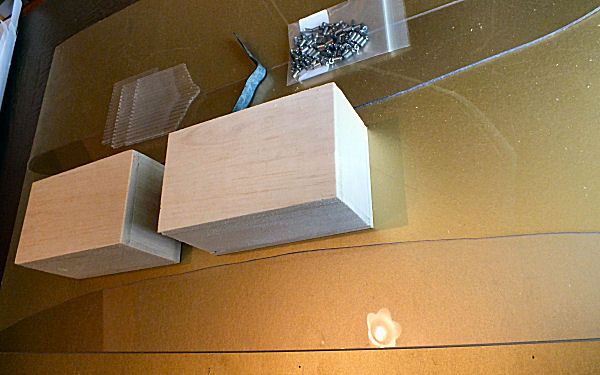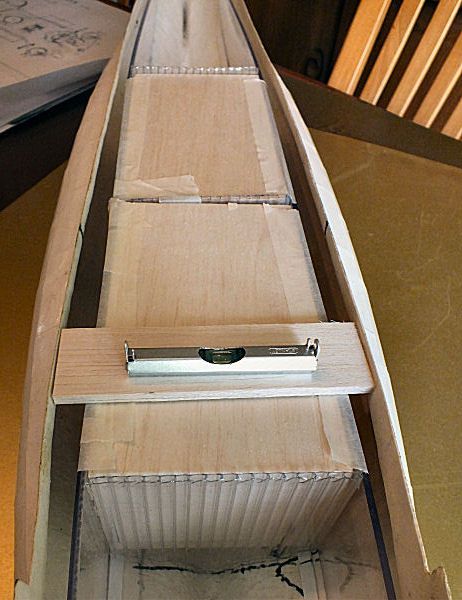Internal structureA lot of head scratching resulted in some lateral thinking. Instead of looking at the problem as building a ‘House of Cards’ inside a partially enclosed volume I switched to thinking in terms of the space volumes to be enclosed. So I built the main volumes as balsa sheet boxes, to locate and temporarily attach the watertight panels on to. That way it could be made solid, square, and with vertical planes. Once completed the balsa ‘volumes’ would be removed and the framework secured into the hull.
It has taken a while to reach this stage as numerous other considerations have to be factored in, such as how large the access apertures need to be for the watertight hatches. I now have suitable M3 stainless blind nutserts, a key dimensional factor for the hatch apertures to fit and access internal equipment.
The first balsa box replicates the main 6V battery compartment, including space to twist and lift out the battery. The second box represents the mister chamber, again with lift out clearance. A strip of lead sheet was used to copy lower hull profile sections.

Now assembly can start, knowing dimensions are correct and all is square. Tape was used to locate panels to boxes, whilst making sure panel edges seat well into hull profile. Note mini spirit level using balsa strips.

Moving outwards, the next two chambers only required partial balsa boxes to set dimensions and ensure squareness. With four of the seven chambers the framework is quite solid and removable.

Eventually the panel joints can be epoxied, then the tape and balsa boxes can be removed. It is intended to seat the framework onto beads of Silkflex 221 air curing sealant adhesive, after all the slots and tubes etc have been built in.
 Author
Topic: Bob's H.M.S. Polyphemus (Read 302162 times)
Author
Topic: Bob's H.M.S. Polyphemus (Read 302162 times)



